We’ve all heard the phrase “busy as a bee,” but besides the bees, there are other busy flying insects out there.
Take, for instance, the yellow jackets. They look the same and may be mistaken for bees. Are they as busy as the bees, too?
This post will explore the similarities and differences between honey bees and yellow jackets.
Grab your beekeeper suit, and let’s discover who is the busiest insect in our garden!

Honey Bee Vs. Yellow Jacket: Knowing the Distinction
While honey bees and yellow jackets may be similar in some ways, there are more differences than you might think. There is much to learn about these two species, from physical characteristics to nesting habits.
The honey bee and the yellow jacket are two of the most common flying insects found in gardens and backyards. Both species provide numerous benefits to our environment, as both of them are excellent pollinators.
However, there are differences between honey bees and yellow jackets that are worthy of knowing. Knowing these differences would help us identify which insect lives around us. It will help us come up with the right decision when our safety is at risk.
At the same time, knowing these distinctions can help us appreciate and reap these insects’ benefits while avoiding potential risks.
Honey Bee vs Yellow Jacket: Similarities & Differences
There are a few similarities and many differences between a honey bee and a yellowjacket.
Physical Appearance
At first glance, you can easily see that there are similarities in their physical appearance. Both the honey bee and yellow jacket are winged insects with yellow and black stripes on their bodies.
However, one difference lies in their color. The yellow jacket is predominantly black with bright yellow stripes. On the other hand, the honey bee shows a balance of black and dull yellow striping.
You can also distinguish one from the other by their sizes. Worker yellow jackets are bigger than worker bees. However, male and queen honey bees are larger than their yellowjacket counterparts.
Honey bees have rounded, fuzzy bodies with sticky hairs. A yellow jacket would have a hairless and elongated body with a thin waist and a soft tapering at the end.
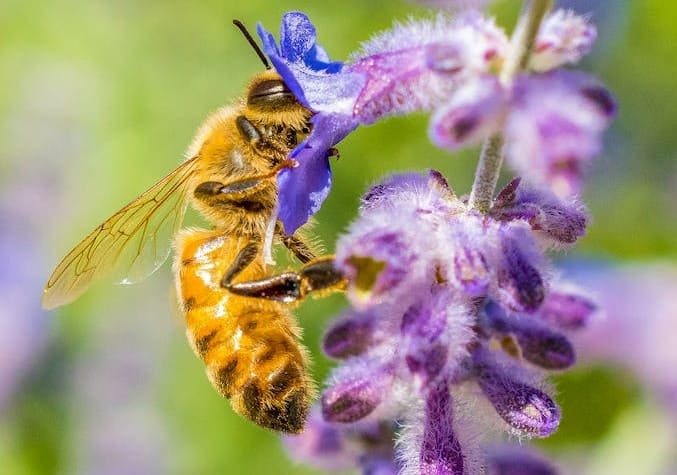
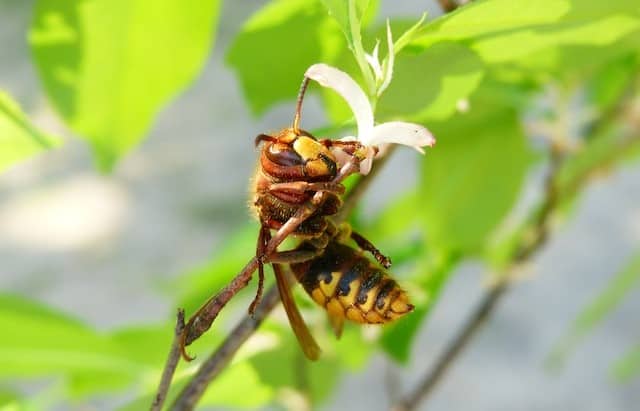
Social Behavior
When it comes to social behavior, both the honey bee and yellowjacket love buzzing around in our gardens when the flowers are in bloom.
Both are beneficial pollinators in the ecosystem. Without them, many plants would not produce much food to help us survive.
Honey bees are known for their peaceful, communal lifestyle. They live together in large colonies and cooperate with each other to build wax combs, gather nectar, and feed their young.
Meanwhile, yellow jackets are more aggressive. They’re fiercely territorial and will defend their nests vigorously against any intruders – even other insects! While they do work together to feed their larvae, they tend to be solitary creatures that don’t interact much with each other outside of the nest.
While both insects eat nectar and pollen to survive, honey bees do more than that as they visit flowering plants. Honey bees collect pollen and nectar to make honey. Unlike honey bees, yellow jackets do not produce honey.

Nesting Habits
Both are social insects that live in colonies as well. A honey bee colony is usually built out of wax combs in a hive.
Honey bee hives can be found anywhere from trees, caves, and man-made hives.
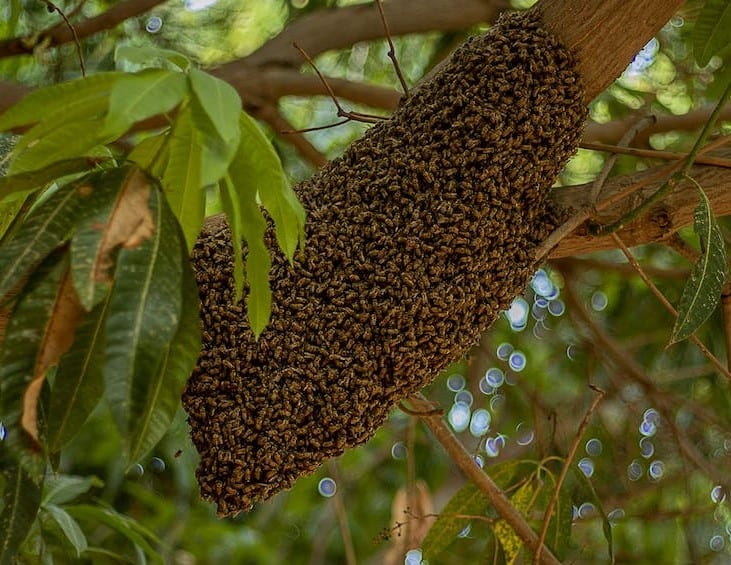
Yellow jackets, on the other hand, like to live together as colonies.
A yellow jacket nest is commonly situated in a wall cavity, on the sides of buildings, or in trees.
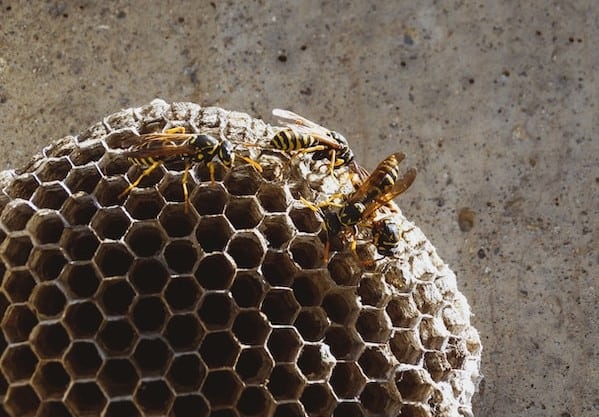
Honey bees and yellow jackets are easily distinguished by their nesting habits. Honey bees typically build wax combs in hives. Yellowjacket colonies usually live in nests located in tree branches, inside walls, or even underground burrows.
Stinging Capacity
Both the honey bee and yellowjacket are stinging insects. Both of them can deliver an unpleasant sting. However, their stings can vary in intensity.
Yellowjackets are highly aggressive, while honeybees are a bit docile.
Honey bees would sting only when they feel threatened or provoked. Honey bees have venom on their stingers that causes stinging pain. Yet, their stings are less painful compared to that of a yellowjacket.
Honey bee stings are usually fairly mild and tend to cause localized redness and swelling that usually subsides within a few hours.
Yellow jackets, on the other hand, can sting repeatedly, even without provocation. They have much more powerful venom in their stingers, which can be painful and last for several days.
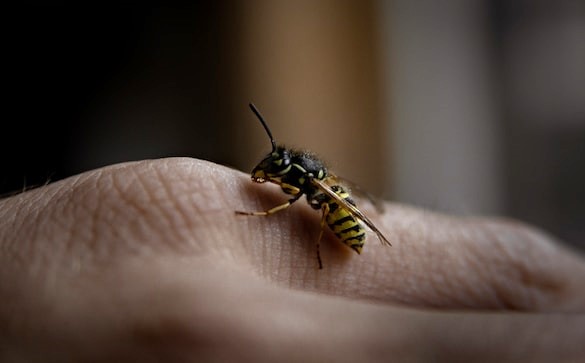
Benefits of Honeybees and Yellowjackets
Honey bees and yellowjackets are both beneficial insects, but they come with their own set of risks. Knowing the differences between the two can help us reap the benefits while reducing our chances of being hurt or disturbed by them.
Honey bees are renowned for producing honey, and they store it away in beehives or tree cavities for later use. On the other hand, wasps like yellow jackets do not produce honey.
Both honey bees and yellow jackets provide numerous ecological benefits to our environment. They are beneficial pollinators, pollinating plants and vegetables to produce fruits for our consumption.
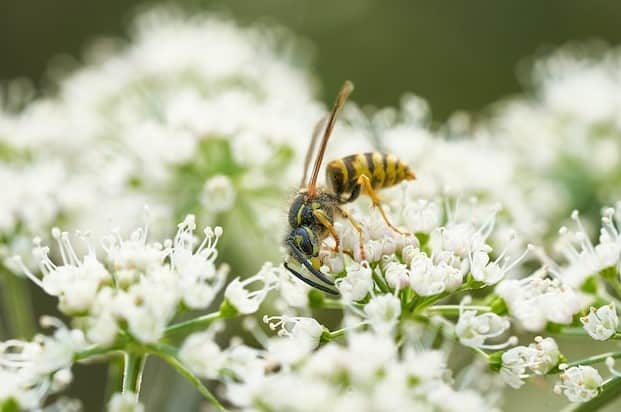
Risks of Honeybees and Yellowjackets
While honeybees and yellowjackets are similarly important for pollinating flowers and plants, their presence in our yards can cause some problems. Knowing that both can sting, their presence alone could be a threat.
Also, these pollinators bring pollen and nectar back to their nests. A honeybee brings back pollen and nectar to make honey, while a yellowjacket brings back a few to feed their young. The presence of pollen and nectar can attract other animals, like ants and rodents, to their nests.
The best way to deal with them is to give them space and not disturb them if possible. However, if a large colony has been established in your wall or close to your home or garden, you may need to take further steps.
When you have a honeybee colony or hive, asking for the advice and help of a local beekeeper could help you reach an informed decision on the proper thing to do. In some cases, the beekeeper may even help safely remove the honeybee hive and colony for free.
In the case of yellowjackets, the services of a pest control or removal services company may be necessary. Do not attempt to remove the nests by yourself. Remember, yellowjackets can sting multiple times and can sting painfully.
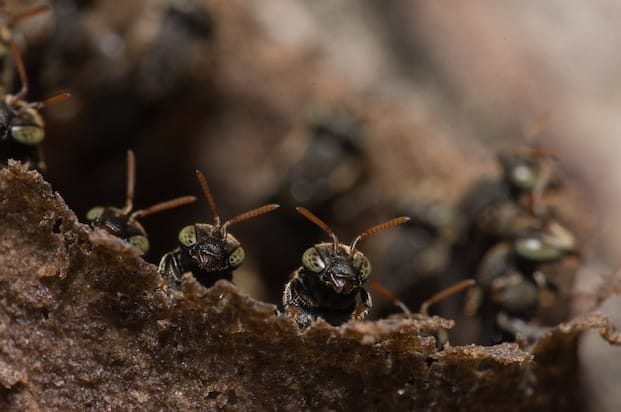
Final Thoughts
Honey bees and yellow jackets both play vital roles in promoting our environment and protecting the ecosystem.
They provide effective pollination services, allowing plants and vegetables to bear more fruits for our consumption.
The benefits that people get from having them around far outweigh the risks of having them. As long as appropriate precautions are undertaken in their presence, there is little risk of being stung by these insects.
It is important that we minimize activities that they may interpret as threats and can disturb them. Getting rid of predators that can harm and kill bees and yellowjackets is also essential for their survival. Ensuring their survival is our own way of supporting our environment.
In conclusion, understanding the similarities and differences between a honeybee and a yellow jacket gives us an idea of what appropriate measures to take in their midst. At the same time, it directs us on what services to avail when we have a nest or hive at home that we want to relocate or remove.
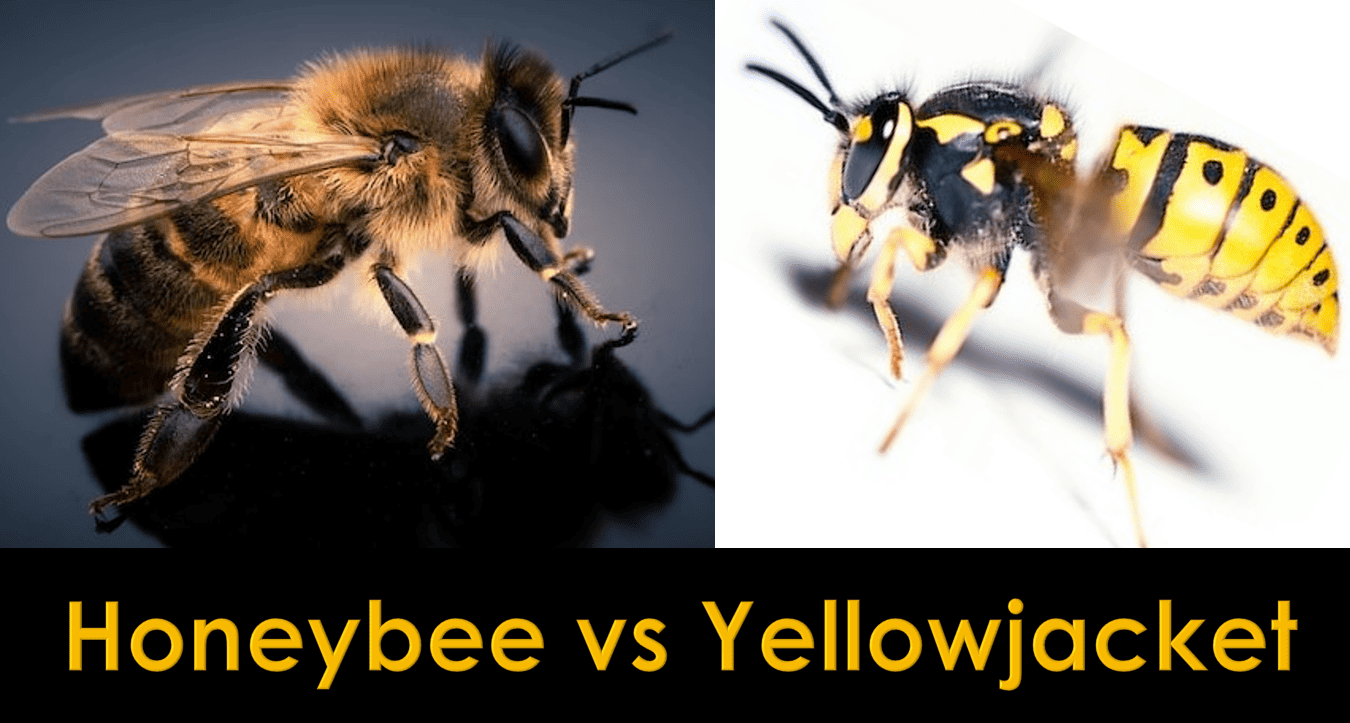
can honey bees and yellow jackets co-exist in the same hive? Also will yellow jackets take over a honey bee hive for its honey?
Hey there! Honey bees and yellow jackets? Definitely not buddies. Yellow jackets are like tiny honey thieves – they’ll totally raid bee hives for the sweet stuff, especially when food’s scarce. I’ve seen it happen in my own apiary. They’ll even munch on bee larvae (yuck!). Strong hives can usually defend themselves, but I’ve lost a few weak colonies to these bullies. Now I use hive entrance reducers – it’s like giving my bees a tiny fortress door!